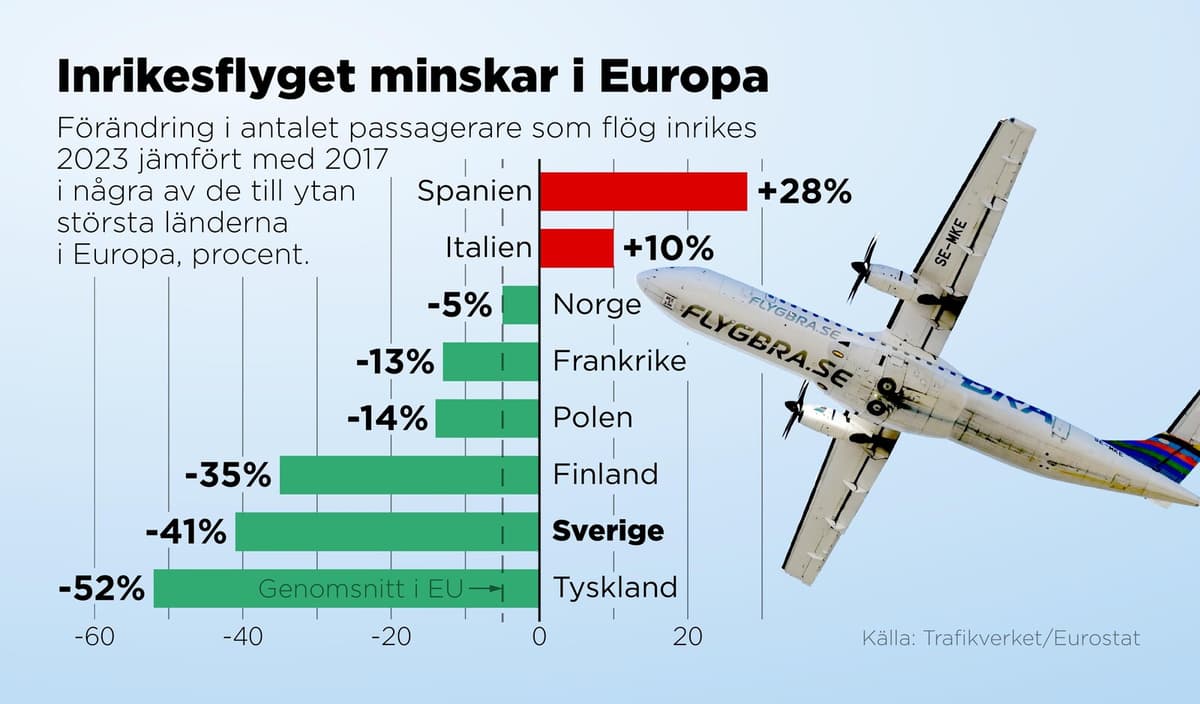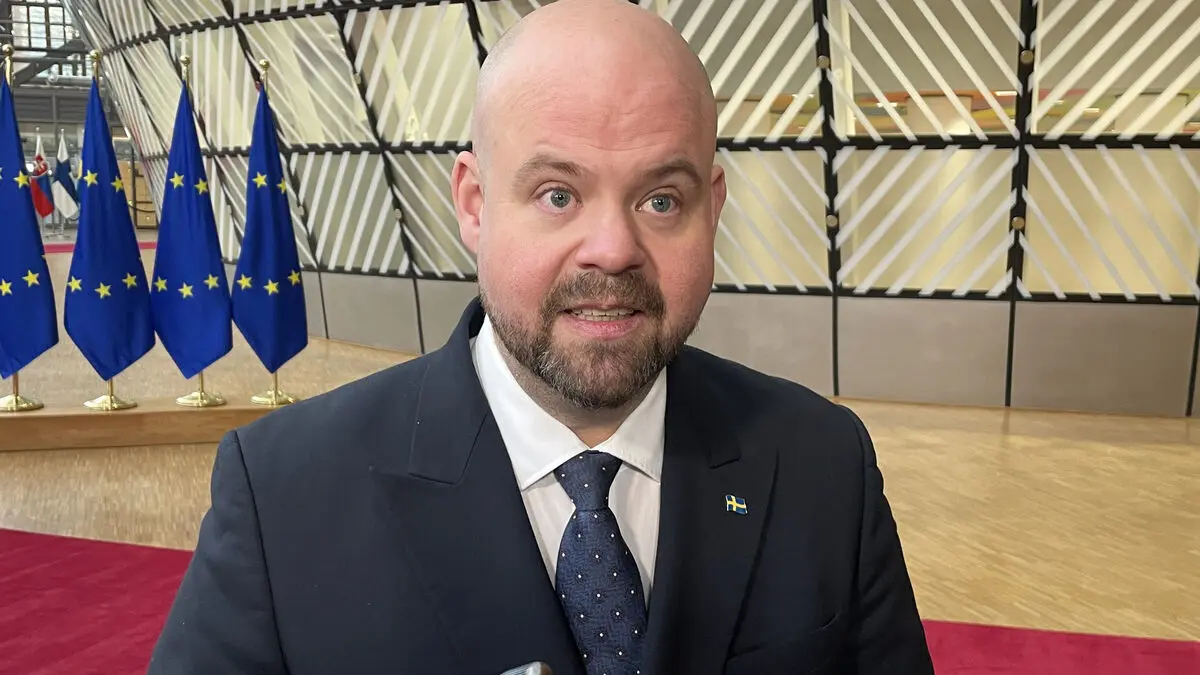The pandemic caused air travel to slow down significantly. But for domestic flights in Sweden, the decline had already begun.
Between 2018 and 2019, there was a significant drop in the number of passengers traveling by air within Sweden, according to Jean-Marie Skoglund, air market analyst at the Swedish Transport Agency. Even international air travel showed a decline just before the pandemic struck.
They say the pandemic contributed to the decline in air travel, but we could see these declines for domestic flights as early as autumn 2017, but they became more pronounced in 2018 and 2019, says Skoglund.
Lack of Competition
According to statistics from Eurostat, only a few countries within the EU have a larger decline than Sweden when it comes to domestic travel.
In Germany, there was a 52 percent decline between 2017 and 2023. In Sweden, domestic air travel decreased by 41 percent during the same period.
The same trend can be seen among our Nordic neighbors, although the decline was not as large as in Sweden.
In countries such as Spain, Italy, and Portugal, the number of passengers has instead increased.
Sweden has the third-largest geographical area in the EU. Yet, we see a significant decline here, while the average for the entire EU is minus 5 percent, says Jean-Marie Skoglund.
Why, then, is there such a large decline in Sweden? Several factors play a role. For a long time, there has been a lack of competition on the domestic market with fewer and fewer actors. This, in turn, leads to higher ticket prices, according to Jean-Marie Skoglund. In Spain, for example, there is a larger market for low-cost flights.
Low-cost flights are a major explanation for why Spain is increasing domestic air travel. We don't have that in Sweden.
A Shift
Skoglund also points out that the business community no longer travels in the same way as before. This can partly explain the large decline at airports in Malmö and Göteborg, where many trips to Stockholm used to take place during the day.
The aviation industry's emissions and environmental impact also contribute, and have led organizations, municipalities, and authorities to introduce various policies for business travel – which hits domestic air travel hard, according to Skoglund.
You also have public opinion, concern about the environmental impact of aviation.
But while Swedes are shunning domestic flights, they are not as hesitant to book vacation trips to destinations abroad. International air travel is increasing, although it is at a lower level compared to before the pandemic.
"Will Be Expensive"
Are there any consequences to the decline of air travel in Sweden?
It will be extremely difficult to maintain the infrastructure that exists in the country around airports, which is also very important to have from a crisis preparedness perspective.
In Sweden, there are 27 so-called preparedness airports, which are ready to be used in case of emergencies, such as transporting patients.
This type of preparedness will become very expensive, says Jean-Marie Skoglund.
The interest organization Svenska regionala flygplatser represents 33 airports operated by regions and municipalities. They see how the deficits at airports are increasing.
Especially for smaller airports, the margins are tough. Volumes have decreased, and demand is scarce, making it difficult to achieve profitability, says CEO Peter Larsson.
Question of Accessibility
He highlights domestic air travel as an important component when it comes to accessibility:
For example, when it comes to the inland regions of Norrland, where the distance to Stockholm is great. Road connections exist, but not trains. There, air travel becomes an important component.
According to Larsson, there is little to suggest that the trend will reverse. In the short term, more government support is needed, he believes.
Jean-Marie Skoglund at the Swedish Transport Agency points out the importance of getting aviation's transformation underway.
Showing that aviation can contribute to as low emissions as possible and that it can achieve zero emissions in the future is extremely important. But the transformation will be difficult to handle if domestic travel continues to decline.
The number of passengers at Swedish airports last year was 30.3 million, slightly more than the previous year (29.8 million).
International air travel increased by 3.5 percent in 2024, while domestic travel decreased by around 9 percent.
So many flew domestically 2018-2024:
2024: 4.23 million passengers
2023: 4.66 million passengers
2022: 4.20 million passengers
2021: 2.21 million passengers
2020: 2.04 million passengers
2019: 6.98 million passengers
2018: 7.66 million passengers
Source: Transportstyrelsen





